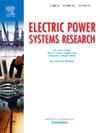配电网光伏集成动态重构的层次深度强化学习
IF 4.2
3区 工程技术
Q2 ENGINEERING, ELECTRICAL & ELECTRONIC
引用次数: 0
摘要
在实现碳峰值和碳中和的双碳战略背景下,随着新能源特别是分布式光伏系统的日益普及,配电网环境变得更加复杂,导致现代配电网弃风问题严重。本文在深度强化学习(DRL)的奖励函数中引入电压偏差指标,提出了一种分层深度强化学习(HDRL)方法,该方法将强化学习(RL)算法中的智能体分为高级控制器和低级控制器,从不同的时空尺度分析配电网络的运行环境,优化配电网动态重构(DNDR)的主动策略。高级控制模型负责制定全局策略和选择不同的交换组动作,低级控制模型负责执行具体的交换动作。这种方法激励智能体减少切换动作的选择,从而避免了算法在复杂环境下陷入局部最优。实例分析表明,该方法节约总经济成本563.34美元,电压质量提高91.71%。实例研究表明,该方法可以更有效地增强分布式光伏的消纳能力,减少弃风现象,提高分布式电网的运行稳定性和可靠性。本文章由计算机程序翻译,如有差异,请以英文原文为准。
Hierarchical deep reinforcement learning for dynamic reconfiguration of photovoltaic integration in distribution network
In the context of the dual-carbon strategy for achieving carbon peak and neutrality, the increasing penetration of new energy sources, particularly distributed photovoltaic (PV) systems, has made the distribution network (DN) environment more complex, leading to serious curtailment issues in modern distribution systems. This paper introduces a voltage deviation index into the reward function of deep reinforcement learning (DRL) and proposes a Hierarchical Deep Reinforcement Learning (HDRL) method, which divides the agent in the Reinforcement Learning (RL) algorithm into high-level and low-level controllers to analyze the operating environment of the DN from different spatial and temporal scales, optimizing the proactive strategy for Dynamic Reconfiguration of Distribution Networks (DNDR). The high-level control model is responsible for formulating global strategies and selecting different switching group actions, while the low-level control model is responsible for executing specific switching actions. This approach incentivizes the agent to reduce the selection of switching actions, thus avoiding the algorithm from falling into local optima in complex environments. Case studies show that the method saves $563.34 in total economic cost and improves voltage quality by 91.71 %. The case studies validate that this method can more effectively enhance the consumption capacity of distributed PV, reduce the phenomenon of curtailment, and improve the operational stability and reliability of the DN.
求助全文
通过发布文献求助,成功后即可免费获取论文全文。
去求助
来源期刊

Electric Power Systems Research
工程技术-工程:电子与电气
CiteScore
7.50
自引率
17.90%
发文量
963
审稿时长
3.8 months
期刊介绍:
Electric Power Systems Research is an international medium for the publication of original papers concerned with the generation, transmission, distribution and utilization of electrical energy. The journal aims at presenting important results of work in this field, whether in the form of applied research, development of new procedures or components, orginal application of existing knowledge or new designapproaches. The scope of Electric Power Systems Research is broad, encompassing all aspects of electric power systems. The following list of topics is not intended to be exhaustive, but rather to indicate topics that fall within the journal purview.
• Generation techniques ranging from advances in conventional electromechanical methods, through nuclear power generation, to renewable energy generation.
• Transmission, spanning the broad area from UHV (ac and dc) to network operation and protection, line routing and design.
• Substation work: equipment design, protection and control systems.
• Distribution techniques, equipment development, and smart grids.
• The utilization area from energy efficiency to distributed load levelling techniques.
• Systems studies including control techniques, planning, optimization methods, stability, security assessment and insulation coordination.
 求助内容:
求助内容: 应助结果提醒方式:
应助结果提醒方式:


